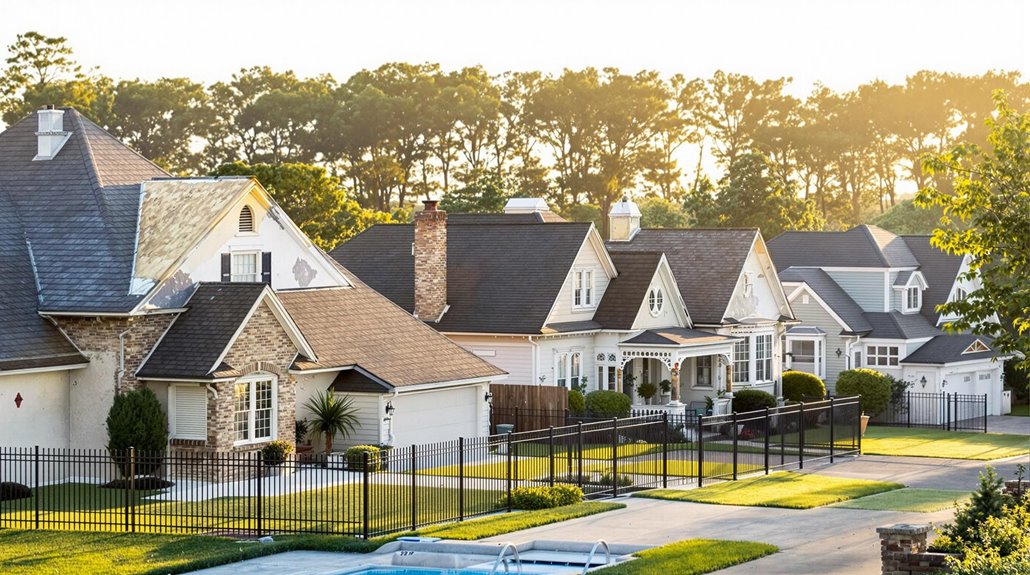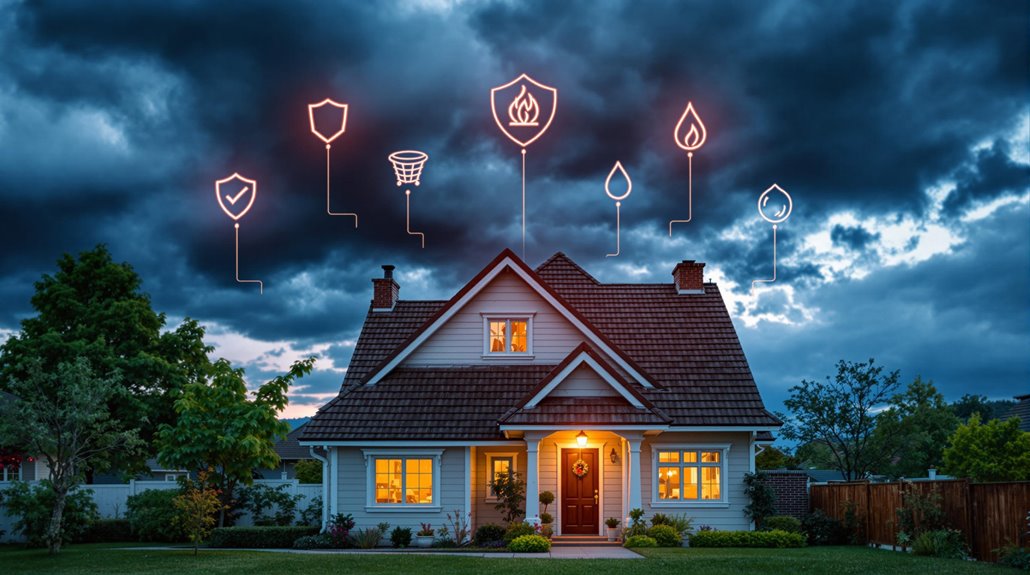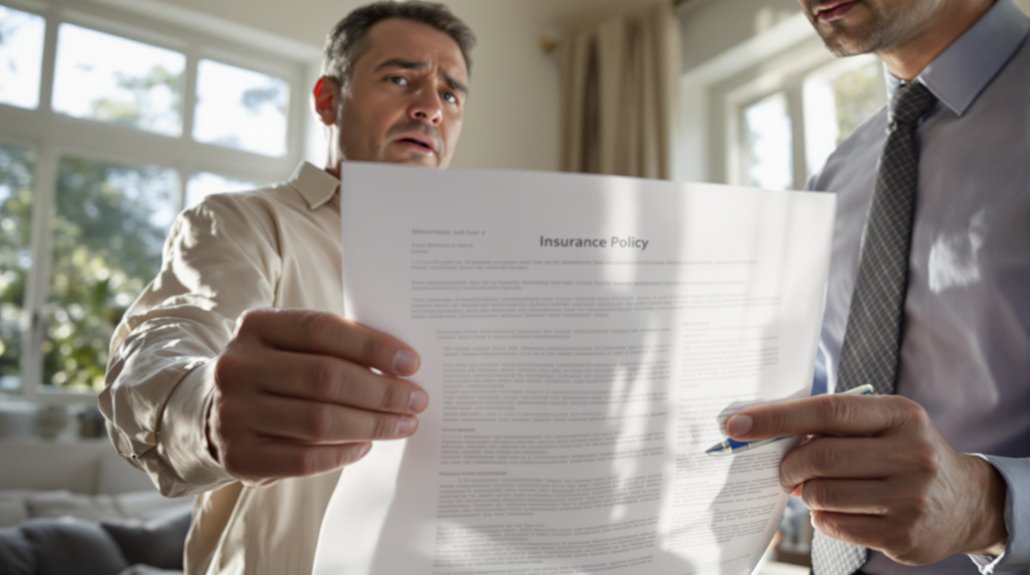Think of risk in homeowners insurance as your home's personal threat detector – it's what keeps insurance companies up at night and determines how much you'll pay to protect your castle. Ever wondered why your neighbor's premium differs from yours? That's risk at work!
When insurers look at your home, they're basically playing detective, sizing up everything that could possibly go wrong. Is your house perched on a flood-prone hillside? Do you live in an area where break-ins are as common as morning coffee? These potential "what-ifs" shape your coverage and costs.
Let's break it down: risk is like a recipe with two main ingredients – perils (think fire, storms, or that tree that's been eyeing your roof) and hazards (like your home's age or how close you are to a fire station). Insurance companies crunch these numbers to figure out just how risky it is to insure your property.
But here's the good news – understanding risk isn't rocket science! By getting to grips with what makes your home more or less risky, you can make smarter choices about your coverage. Maybe it's time to install that security system you've been considering, or finally fix that wobbly handrail. Remember, lower risk often means lower premiums – and who doesn't love saving money while staying protected?
Your relationship with risk directly impacts your insurance journey, from the coverage you choose to the premiums you pay. Think of it as your home's insurance GPS – the better you understand it, the smoother your protection journey will be.
Key Takeaways
- Risk in homeowners insurance refers to the likelihood of loss or damage to the insured property, affecting coverage options and premium rates.
- Insurance risk factors, such as location and property condition, influence premiums, with higher risk properties incurring higher insurance costs.
- Homeowners insurance policies mitigate personal, property, and liability risks, including perils like fire, theft, and water damage.
- Identifying and mitigating potential hazards through regular property inspections and safety upgrades can reduce exposure to insurance risk factors.
- Effective risk management techniques, such as installing safety measures and maintaining an updated inventory of possessions, can minimize potential losses.
Defining Risk in Homeowners Insurance Policies
Risk assessment is a fundamental component of homeowners insurance policies. It refers to the process of evaluating the potential for loss or damage to the insured property, which directly influences coverage options and premium rates.
Insurance companies assess various factors, such as location and property characteristics, to determine the risk level associated with a home before issuing a policy. This assessment enables insurers to provide homeowners with coverage options tailored to their specific risk profile.
Higher risk properties, such as those in flood zones or with a history of claims, typically incur higher premiums due to the increased likelihood of loss. By understanding risk, homeowners can make informed decisions about their coverage and take proactive measures to mitigate potential losses, ultimately affecting their insurance costs and claim outcomes.
Insurance companies use risk assessments to balance their risk exposure and provide suitable coverage to homeowners. Homeowners can reduce their risk profile and potentially save up to 25% on premiums by bundling multiple insurance policies with the same carrier.
Understanding the Role of Perils in Insurance Risks

In the context of homeowners insurance, perils play a vital role in defining the scope of coverage provided to policyholders. A peril is the specific event or cause that leads to a loss, such as fire, theft, or vandalism.
Homeowners insurance policies typically cover either named perils or all perils except those explicitly excluded.
- Named perils insurance only covers risks that are explicitly listed in the policy.
- All risks insurance provides broader coverage by protecting against all perils unless they are specifically excluded.
Common exclusions in homeowners insurance policies can include natural disasters like floods and earthquakes, which may require separate riders for coverage.
Understanding the role of perils in a homeowners insurance policy is essential for evaluating insurance needs and potential financial risks.
Working with public adjusters can help maximize claim settlements for covered perils by up to 700% compared to handling claims independently.
Identifying Hazards That Affect Insurance Risks

The role of perils in defining the scope of coverage provided by homeowners insurance policies highlights the importance of understanding the various factors that contribute to risk. Hazards, in particular, play a significant role in determining insurance risks.
These conditions or factors increase the likelihood of a loss, such as having a swimming pool or faulty wiring in a home. Physical hazards, like damaged roofs or overgrown trees, can directly influence insurance rates and coverage decisions.
Homes located in areas prone to natural disasters, such as flood zones or earthquake-prone regions, are considered high-risk due to the hazards present. Identifying and mitigating hazards through regular home inspections can help reduce risk and potentially lower insurance costs. Only 27% of homeowners living in designated flood zones have proper flood insurance coverage to protect against water damage.
How Insurance Companies Assess Risks for Policy Issuance

Insurance companies employ an extensive risk evaluation process to evaluate property risk factors, such as location, age, and condition, to determine the likelihood of future losses.
Through this process, insurers identify potential hazards, including physical hazards like swimming pools or outdated electrical systems, which can greatly impact coverage options.
Insurers often recommend liability coverage limits between $300,000 and $500,000 to adequately protect homeowners against potential risks.
Evaluating Property Risk Factors
While issuing homeowners insurance policies, evaluating property risk factors is a critical step that determines the likelihood of potential losses and subsequent premium rates. Insurance companies assess these factors to identify potential hazards and determine the level of risk associated with a particular property.
Some key factors considered in evaluating property risk include:
- The property's location, including proximity to flood zones or areas prone to natural disasters
- The age and maintenance level of the property, with older homes or poorly maintained properties presenting higher risks
- A homeowner's claims history, with a history of frequent claims leading to a higher risk classification and potentially higher premiums or coverage restrictions
Homeowners may need to consider adding sewer line coverage as an endorsement since standard policies often exclude damage from backed-up or broken lines.
Identifying Potential Hazards
As part of the insurance policy issuance process, identifying potential hazards on a property is a critical step that allows insurance companies to assess the level of risk involved and determine corresponding premiums.
Insurers evaluate physical conditions such as swimming pools, damaged roofs, or frayed wiring that may increase the likelihood of a loss. The presence of hazards can lead to higher premiums or policy cancellation, as insurers weigh the potential for claims when determining coverage options.
Homeowners in high-risk areas, such as those prone to flooding or earthquakes, face stricter scrutiny and higher costs due to inherent hazards.
Understanding and mitigating hazards is essential for homeowners, as proactive risk management can improve insurability and lower insurance costs by reducing risks and ensuring adequate coverage.
Assessing Peril Coverage
How do insurance companies determine the risks associated with insuring a home and arrive at a corresponding premium? Evaluating peril coverage is a critical step in issuing homeowners insurance policies.
Insurance companies evaluate the likelihood of perils such as fire, theft, and natural disasters impacting a property. To determine the risk level associated with insuring a home, underwriters consider factors like:
- Property location and its history of natural disasters
- Age and condition of the property
- Previous claim history
A named perils policy only covers specific risks listed in the policy, while an all-risks policy covers all perils except those explicitly excluded.
The burden of proof in claims lies with the insured to demonstrate that the peril causing the loss is covered under their risk policy.
Types of Insurance Risks Covered by Homeowners Policies

Homeowners insurance policies are designed to mitigate various types of risks that homeowners may face, and understanding these risks is essential to selecting the right policy. One critical aspect to be aware of is the potential for insurance fraud in homeowners policies, which can lead to increased premiums for all policyholders and strain financial resources. By being vigilant and recognizing the signs of fraudulent claims, homeowners can help protect themselves and ensure that their insurance effectively covers their legitimate needs.
The types of insurance risks covered by homeowners policies can be broadly categorized into personal, property, and liability risks. Personal risks include potential losses related to injury, death, or damage to personal property within the insured premises.
Property risks encompass perils such as fire, theft, vandalism, and water damage resulting from burst pipes, as specified in the policy. Liability risks protect homeowners from legal claims arising from injuries or damages occurring on their property.
Additionally, high-risk homeowners insurance is available for properties in areas prone to natural disasters, and special endorsements or riders can be added to base policies to enhance overall protection.
The Importance of Risk Management in Homeowners Insurance

Risk management is a critical component of homeowners insurance, enabling policyholders to identify and mitigate potential hazards that could result in costly claims.
By employing risk management techniques, such as conducting regular home inspections and implementing safety measures, homeowners can reduce their exposure to insurance risk factors and minimize potential losses.
Effective risk management practices also facilitate informed decision-making regarding insurance coverage, ensuring that policyholders are adequately protected against unforeseen events.
Risk Management Techniques
Numerous factors contribute to the likelihood and potential severity of losses in homeowners insurance, underscoring the importance of effective risk management techniques in mitigating these risks.
Implementing the following measures can greatly lower the likelihood of claims, reduce premiums, and minimize financial exposure:
- Regular property inspections to identify physical hazards, such as frayed wiring or damaged roofs
- Implementing safety measures, like installing smoke detectors and security systems
- Maintaining an updated inventory of possessions to aid in the claims process and guarantee adequate coverage for personal property losses
Insurance Risk Factors
When evaluating homeowners insurance policies, the determination of premiums is fundamentally influenced by insurance risk factors, which encompass a wide range of variables that assess the likelihood and potential severity of losses.
These factors are assessed by underwriters, who consider elements such as location, property age, and maintenance history to categorize homes into risk classes. This classification influences pricing and coverage options, with higher risk properties typically incurring higher insurance premiums.
Effective risk management strategies, such as regular home inspections and safety upgrades, can help mitigate potential losses and lead to discounts on insurance premiums.
Homeowners who understand and manage insurance risk factors can select suitable coverage and guarantee adequate protection against potential losses, ultimately affecting the cost of their homeowners insurance policies.
The Benefits Of Consulting A Public Adjuster

Consulting a public adjuster can provide homeowners with specialized expertise in insurance claims, enabling them to navigate complex policies and procedures.
A public adjuster's objective assessment of damage can also help guarantee that claims are accurately documented and presented to the insurance company, streamlining the claim process.
Expertise In Insurance Claims
As managing the complexities of insurance claims can be an intimidating task for homeowners, the role of a public adjuster is critical in guaranteeing a fair and accurate recovery.
Public adjusters possess expertise in interpreting complex insurance policies, guaranteeing that all covered damages are identified and appropriately documented for claims.
Key benefits of engaging a public adjuster include:
- Accurate assessment of damages to guarantee maximum recovery under the policy
- Expert interpretation of insurance coverage that automatically extends to personal property
- Effective negotiation with insurance companies to secure fair settlements
Objective Damage Assessment
Property damage assessments are a critical component of the insurance claims process, and a key area where homeowners can benefit from the expertise of a public adjuster. By consulting a public adjuster, homeowners can guarantee an objective assessment of property damage, which is essential for accurately documenting and reporting losses to the insurance company. This expertise can lead to higher claim settlements and a faster claims process.
| Benefits of Public Adjuster | Type of Insurance Coverage | Claim Outcome |
|---|---|---|
| Objective damage assessment | Homeowners insurance | Accurate claim payout |
| Expert navigation of insurance policies | Named-peril coverage | Higher claim settlement |
| Dedicated advocacy | All-risk coverage | Faster claim resolution |
When homeowners file a claim, a public adjuster can provide guidance on the type of insurance coverage and guarantee that all necessary documentation is prepared and submitted, resulting in a more efficient claims process.
Streamlined Claim Process
By leveraging the expertise of a public adjuster, homeowners can greatly expedite the claims process, ensuring that their insurance claims are handled efficiently and effectively.
A streamlined claim process is essential in reducing the stress and complexity associated with filing insurance claims, particularly for coverage that automatically covers common perils.
The benefits of consulting a public adjuster include:
- Expert guidance and support in documenting and valuing damages for insurance claims
- Handling all communication with the insurance company, reducing the burden on the policyholder
- Faster claim resolution through direct negotiation with insurers and avoidance of delays caused by insufficient documentation or disputes
Higher Claim Payouts & Settlements
While steering through the complex process of filing an insurance claim can be overwhelming for homeowners, employing a public adjuster can greatly enhance the likelihood of securing higher claim payouts and settlements.
Public adjusters are experts in negotiating with insurance companies, often securing settlements that are 20% to 50% higher than the initial offer. Their in-depth understanding of home insurance policies, including definitions of risks and covered losses, enables them to effectively advocate for maximum compensation.
About The Public Claims Adjusters Network (PCAN)

The Public Claims Adjusters Network (PCAN) is an extensive resource that connects policyholders with pre-vetted, licensed, and experienced public adjusters specializing in residential and commercial property damage insurance claims.
PCAN's member adjusters are experts in their field, covering over 30 different claim types and located in 40+ states. To be part of the network, public adjusters must undergo an intensive application and interview process, confirming they meet the highest standards of ethics, morals, and professionalism.
Some key benefits of working with a PCAN member adjuster include:
- Expert knowledge of insurance contracts and policies to guarantee fair claim settlements
- Assistance in maneuvering the complex process of filing a claim and negotiating with insurance companies
- Help in maximizing claim payouts and minimizing the financial impact of loss of property
Frequently Asked Questions
What Does Risk Mean in Insurance?
In insurance, risk refers to the likelihood of a loss occurring. Insurers assess risk through risk assessment to determine insurance premiums and coverage limits, enabling them to manage potential losses and set appropriate coverage terms.
What Are the Three Types of Risks That Homeowners Insurance Covers?
A fierce storm ravages a home, highlighting the need for extensive insurance. Homeowners insurance encompasses three primary risks: personal risk, property damage from natural disasters, and liability coverage for accidents or injuries on the property.
What Does All Risk Mean in Property Insurance?
"All risk" in property insurance refers to a policy that covers all perils unless explicitly excluded, offering extensive protection with varying coverage limits, but typically at higher premium costs due to the greater risk assumed by insurers.
What Is the Difference Between Peril and Risk?
Like two intertwined threads, peril and risk form the tapestry of uncertainty. Peril definitions pinpoint specific causes of loss, such as fire or theft, whereas risk examples illustrate the likelihood of loss, carrying significant insurance implications.








